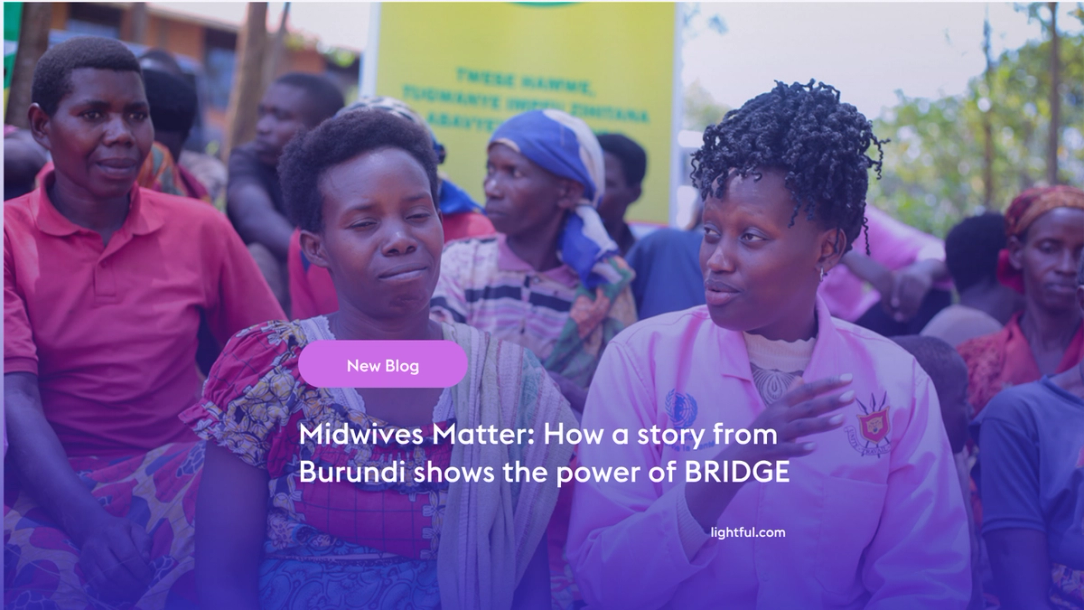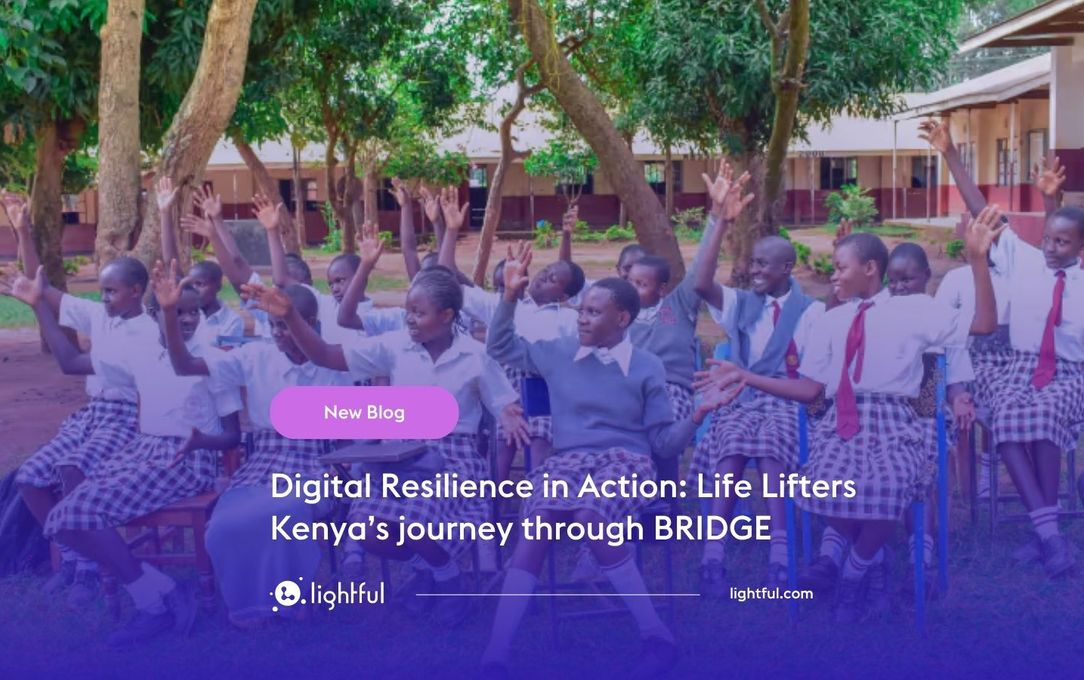How nonprofits can plan a successful Christmas Challenge campaign

End-of-year campaigns can help nonprofits raise vital funds and boost their profiles - tapping into the season of goodwill. It is an opportunity for them to connect with existing and new donors who believe in their mission and want to support them.
Match funding campaigns are a great opportunity to see their donations double while amplifying their campaigns. It has become a popular way to incentivise philanthropy while also driving greater impact.
For nonprofits, it is an opportunity to get a boost to their fundraising efforts. For donors, they can see their impact doubled without donating a larger amount on their own.
According to Charities Trust’s report ‘A great match’, 84% of donors said they are more likely to donate if their donation is matched.
The most popular match funding campaign in the UK is The Big Give’s Christmas Challenge, which takes place from 29 November to 6 December.
Their message is “one donation, twice the impact”, which many organisations use in their campaigns.
For nonprofits joining the campaign, it’s important to highlight in their message that the donations are doubled to encourage more donors to support them. Many organisations see great success by creating a message that explains how they can ‘double the impact’ through each donation to make the idea of the donation even more appealing.
The Big Give asked us to run a session for charities of all sizes joining the Christmas Challenge on how to use social media and digital fundraising for an end-of-year campaign with lessons that apply to all nonprofits planning a fundraising campaign for the end of the year.
We thought it’d be helpful to share our insights from working with hundreds of nonprofits and charities. These 5 steps are for any nonprofits currently planning a campaign, or reviewing their existing digital strategy more generally:
There are 5 steps to take for campaign planning - this should be helpful for any nonprofit or charity.
- Step 1: Confirming the audience and objectives
- Step 2: Creating a cross-channel campaign and planning the content
- Step 3: The power of the extended network
- Step 4: Engagement and monitoring
- Step 5: Linking the Big Give campaign to your broader end-of-year campaign
Whether you work for a charity, or you’re a grantmaker or foundation supporting nonprofits, these steps are key to ensuring you are maximising digital tools to multiply your impact.
Step 1 - Confirming the objectives and audience
The first step to campaign planning for nonprofits is to set the objectives. The earlier objectives are established, the easier it becomes to plan the right actions and measure their success in the end.
In a fundraising campaign, the obvious objective is to raise X amount of money or receive X donations from old and new donors. However, many nonprofits expand the objectives to focus on awareness or engagement with their organisation..
Here are some examples:
Goal 1: Increase brand awareness
“Increase Facebook reach by 20% by the end of the year”
Goal 2: Increase online donations
“Increase the amount raised in the Christmas Challenge by 10%, compared to 2021”
The most successful examples from campaign objectives are specific, actionable, and measurable.
Mapping out the target audience
A campaign can’t be successful if the content is not relevant to the target audience. For most nonprofits, the audience changes depending on the digital channel they are using.
For example, the audience on LinkedIn may not be the same as with Instagram.
There are multiple potential audiences to reach in a campaign:
- Supporters
- Staff
- Volunteers
- Board
- Trustees
- Donors
- Corporate partners
- Newsletter subscribers
The most successful charity campaigns create content that resonates with their audiences and use language that makes it easy to engage them.
Step 2 - Creating a cross-channel campaign and planning the content
All the digital channels used should support a campaign. A cross-channel campaign makes the campaign message consistent while maximising the chances of reaching the target audience.
Looking at all digital channels at once can help nonprofits plan their content more efficiently, especially when they link this with their target audience and where they tend to spend more time.
Let’s look at an example of digital channels for an organisation and how they can be part of a campaign.
- Website: Many nonprofits use their website to raise awareness, provide information, gather sign-ups, and direct people to their donation page.
- Fundraising page: This is the important page that will determine fundraising success. The message should resonate with the audience and it should be easy to share on all channels.
- Social media: Social media is ideal to help raise awareness, boost engagement, and encourage donations, all at the same time.
- Newsletter: Email marketing can help nonprofits of all sizes to reach an audience that is already engaged and keen on hearing from them. When it comes to campaign planning, they can use it to make an ask and direct their subscribers to their donation page.
- Online community: Whether it’s a Facebook Group or a forum, an online community can turn members into the best campaign ambassadors.
- Paid social media: Many nonprofits use online ads to reach a new audience or old donors who lapsed.
Collecting and organising stories
The best way to overcome the challenge of having enough time to plan a campaign is to use what you already have. Start with available content, both the stories and the visual assets, and explore opportunities to repurpose them.
Not all the campaign materials need to be brand new.
When it comes to new content, the most powerful stories to use in a campaign involve beneficiaries, staff or volunteers. Organisations that organise all their stories in one folder so that it’s easy to find them at any time are able to draw on these quickly and efficiently
Step 3 - The power of the extended network
The best way to amplify a campaign is to involve the organisation’s wider network.
The network can include:
- Staff
- Friends of staff
- Supporters
- Volunteers
- Partners
- Board
- Trustees
- Email subscribers
- Influencers
- Media
Starting the outreach at least 2 weeks before the campaign launch helps an organisation’s network prepare for the campaign launch. It’s a good idea to create a 1-page document that serves as the campaign toolkit to share with their network. The document can be just one page including draft posts and images to make it easier for their network to join the campaign in just a few minutes.
We know from the nonprofits that we work with that a campaign toolkit can increase audience participation and engagement as it makes it easier to understand how someone can support the campaign.
Step 4 - Engagement and monitoring
Engagement can help nonprofits feel closer to their audience. It allows them to know what is happening while their campaign is live and to listen to what their supporters say about it.
If there are positive comments, they can reply and thank their followers for their support - increasing engagement. In case of a negative comment, they can receive an alert and decide how they want to address it.
Monitoring tools like Tweetdeck or Brand24 make it easier to track comments and mentions while spending time to reply to engaged followers on digital channels can add a personal touch to the campaign.
Sharing regular updates
All fundraising campaigns are about momentum. Donors want to hear updates on the campaign they are supporting and charities can send several messages during the process to keep them up-to-date and interested. Tapping into the donors’ psychology, for example, many nonprofits encourage their supporters to donate when they are close to reaching their target.
The campaign messages can come at different milestones (such as 25% of target, 50% of target or 90% of target) based on each organisation’s plan.
A question that we hear often: “how many updates should I share during the campaign?”
Our usual answer to nonprofits is that they can send as many updates as they want if they help them meet their target without overwhelming their audience.
Step 5 - Linking the Big Give campaign to the broader end-of-year campaign
For nonprofits planning a Christmas Challenge campaign at the start of December, it’s useful to think of a way to link the campaign with their end-of-year fundraising.
We tend to hear from many nonprofits that they are cautious with campaigns like Giving Tuesday or the Christmas Challenge because they are already planning their end-of-the-year campaign. The best way for them to address this challenge is to blend the narrative in order to make a smooth transition from the initial appeal to the general ask for the end of the year.
This increases the chances to keep their audience engaged, which can lead to more donations.
Watch and share the webinars with The Big Give
Catch up with the webinar we’ve run for The Big Give on Social Media and Fundraising.
Feel free to share it with anyone planning an end-of-year campaign right now!
Sign up for our newsletter
If you want to stay up-to-date with blogs, articles, and events in the nonprofit and philanthropy space, make sure you subscribe to our newsletter.
Latest articles

Over the past year, Lightful and the International Confederation of Midwives (ICM) have supported Midwives Associations across Africa, South Asia and the Eastern Mediterranean to build their digital confidence through our BRIDGE programme. These organisations were starting from very different places, but all shared the same goal: to use digital tools to strengthen their voice, raise their visibility and advocate for better outcomes for women and babies.
Related posts

In today’s rapidly evolving digital landscape, the ability to engage online is a necessity. For nonprofits, especially those working in underserved regions or tackling complex social issues, digital tools can be the bridge between intention and impact. Whether it’s reaching new donors, advocating for policy change, or delivering services, digital capacity enables organisations to scale their mission and deepen their impact. Yet many grassroots organisations remain digitally under-resourced. That’s why Lightful created the BRIDGE programme - Building Resilience in Digital Growth and Engagement - to empower nonprofits with the skills, confidence, and strategies to thrive in the digital age and build lasting change.

Advancing digital maturity: what Lightful has learned from supporting 3,500 charities globally
See who we help
Contact us
Want to learn more?
Email Jonathan and start a conversation







